Turkey Shoot
An Evaluation of Western Wunderwaffen in the Ukraine War (Part 2)
In light of the chatter about #NukesForUkraine, it may finally be safe to say we've reached the very top (or bottom, depending on how you look at it) of the wunderwaffen hype ladder in the Ukraine War. If the sole remaining game changer – barring abstract concepts like deep strikes into Russia or systems equivalent to ones already in theater (Taurus) – is the nuclear weapon, there's nowhere else to go. There's never been a better time to step off the hype train, take a breath, and take stock of where we've been.
In this part of the series, we'll be continuing with systems introduced early in the war.
Baykar Teknoloji Bayraktar TB2
First referred to as a game changer: October 2021 (!), March 2022
Appearance in Ukraine: March 2019
Country of origin: Turkey
Unit Cost: $3-5M
Number sent: >100
Manufacturer market cap: Private ($2B annual revenue)
The Hype
“Behold the work of our life-giving Bayraktar! Welcome to Hell!” - Valery Zaluzhny, February 2022
The Bayraktar TB2’s role was not merely that of a hunter killer, but ultimately even that of a complete ruler over the battlefield. Capable of stalking the location of any ground target and tracking their every move all the while flying in one of the most densely covered areas of air defence, the TB2 could direct other assests [sic] to hit ground targets all the while flying circles above them. (Oryx1)
Fresh off an apparently excellent and well-publicized showing in the 2020 Nagorno-Karabakh conflict, the Bayraktar TB2 rode into the Russo-Ukrainian War on a wave of hype rivaling the Javelin AT system. The drone began as an initiative sponsored by the Turkish defense ministry after the US placed bans on the export of their UAVs to Turkey out of concern they would be used against the Kurds. Its development became a strategic priority for the Turkish government.
The TB2 is roughly equivalent to a downsized American MQ-1 Predator in terms of mass, wingspan, payload, and service ceiling, but unlike the Predator, it was built to be cost-effective (being roughly a quarter of the price). At a time when only a handful of militaries had fielded combat UAVs, the TB2 represented an opportunity for smaller countries like Ukraine to get in on the action.
[The TB2] enabled a fairly significant operational revolution in how wars are being fought right now. This probably happens once every thirty or forty years. - Rich Outzen2
Ukraine placed an initial order for the drones in 2019 and, within two years, had established a joint venture with Turkey to produce them inside Ukraine (this did not happen). Turkey had made a massive marketing push for its defense industry in the preceding years, publishing footage of the TB2 striking targets in Syria, Libya, and Turkey itself, and it paid dividends. Its manufacturer, Baykar Technology, eventually became Turkey's largest exporter, and its designer, Selçuk Bayraktar, styled himself as the Turkish Elon Musk.
Demonstrating his family's (and the TB2's) importance to Turkish prestige, Selçuk married the youngest daughter of Turkish president Recep Erdoğan in 2016. He boasts 3 million followers on Twitter, wears leather jackets, and has no issue admitting he once had a passion for the political work of Noam Chomsky. He even stepped over the line in Turkey's infamously ambivalent relationship with the Russian Federation, vocally supporting the Ukrainians.
In Bayraktar, they have a kind of genius who can change the historical path of Turkey. - Donelli
The drone made its debut in Ukraine before the beginning of the SMO, striking a Russian separatist artillery position in Donetsk Oblast in October of 2021. When the invasion began the next February, Ukraine had 20 TB2s in its inventory. Within days, videos began to emerge of Russian equipment being destroyed by TB2 strikes.
The cameras onboard the TB2 presented a sight the world had never seen before, a major world power being attacked from above through the now-familiar eye in the sky of a drone. This had long been reserved for militias, irregular forces, and terrorists, and it had a profound psychological effect on the Western sphere to see the Russians portrayed this way. Videos of armored vehicles, air defense systems, and artillery pieces being struck by Bayraktars were shared millions of times on social media. Commenters concluded that the Russian military didn't live up to its hype.
In May, the TB2 played a part in the infamous Snake Island saga, destroying a Russian Mi-8 helicopter on the ground and a Tor air defense system. In the same month thousands of Lithuanians contributed to a crowdfunding campaign to purchase an additional Bayraktar for Ukraine. The AFU created a music video for their song simply titled "Bayraktar," which received millions of views. By June, the Ukrainians had received 50 TB2s.
Whatever shape the conflicts of the coming years take, it seems likely that those Russians on Snake Island will not be the last soldiers to bemoan the “f------ Bayraktar,” stalking them from the air. - The Telegraph

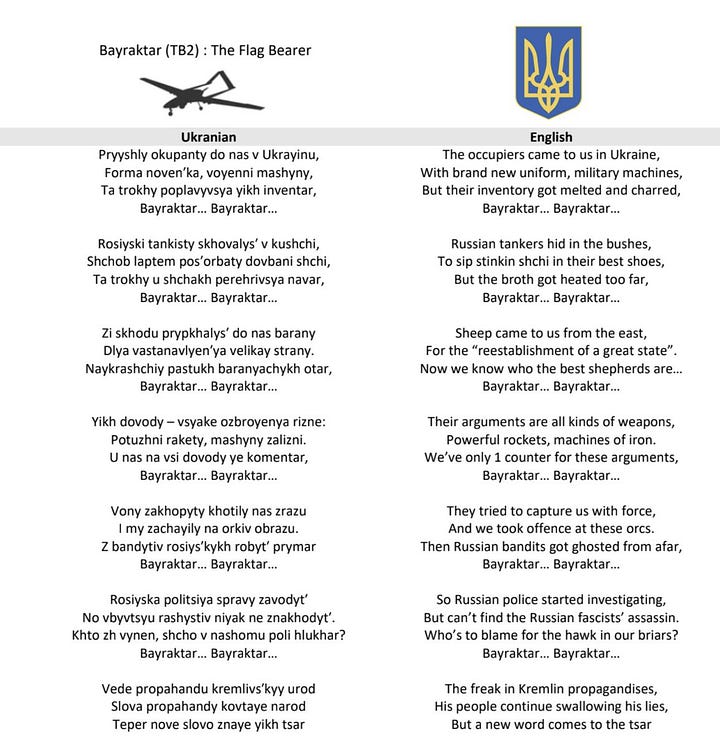
The Reality
"You would expect the Bayraktar to be extremely vulnerable,” says author and drone warfare specialist David Hambling. “It has no stealth. It is basically a World War One aircraft. It is similar to a Sopwith Camel in terms of performance, except it’s not as manoeuvrable. The Russians should have destroyed them on the runway, or their planes should have knocked them out of the sky, or their integrated air defence should have taken them out very easily. None of that happened.” - The Telegraph, May 2022
It would be hard to find a more apt quote to describe the Bayraktar's performance in Ukraine than the one above by David Hambling, provided you make one minor modification: all of that did happen. Mostly invisibly to the Western sphere, from the very beginning of the conflict, the Russians had been shooting down the TB2. On the 24th of February, the first day of the invasion, a Russian rocket barrage destroyed four of the drones on the ground at Chuhuiv air base. That same day, the LPR downed two near Lugansk. And while the chaos in those early days provided ample opportunities for the Bayraktar to score genuine kills, the Russians quickly filled the gaps.
“With all due respect to Bayraktar, and to any hardware, I will tell you, frankly, this is a different war. Drones may help, but they will not make the difference.” - Volodymyr Zelensky, April 2023
Within a few weeks, all of Ukraine's pre-war stock of the TB2 had been destroyed. Baykar promised to devote their entire industrial capacity to producing TB2s for the Ukrainians. A steady stream of new units arrived over the course of the spring, but it wasn't enough to keep up with the rate of destruction achieved by Russian air defense and the Russian Air Force.
The Bayraktar's core issue wasn't its technical specifications its quality, or its production rate. What doomed it to failure was that it was in the wrong war. Slow-moving UAVs, and especially medium-altitude long-endurance (MALE) UAVs, had no place in a conflict with the Russian military. Its role made sense against an enemy with antiquated air defenses and no air force, like the Kurds. Against the Russians, who had perhaps the most sophisticated air defenses in the world, modern fighter jets, and the highest level of electronic warfare capability, no combat UAV of its class had any chance of success.




The general assessment of drones like TB2 is that they work well without sophisticated air and electronic warfare defenses arrayed against them," Samuel Bendett, an analyst and expert in unmanned and robotic military systems at the Center for Naval Analyses, told Insider. "As a relatively slow and low-flying UAV, it can become a target for a range of air defense systems that are well organized – we saw this in Libya and in Nagorno-Karabakh.
By mid-2023, the Russians had shot down over 100 TB2s. This result was not a surprise to a small minority of commentators. Despite Baykar's excellent multi-year marketing campaign, the limitations of MALE UAVs had been known for years. A small radar cross-section couldn't compensate for WWI biplane speed and much worse maneuverability.
The Ukraine conflict wasn't the first time the TB2 had faced Russian-made air defenses either. Dozens of them had been downed by older Russian systems in the hands of the Syrian government and Libyan National Army prior to the drone making an appearance in Ukraine. However, the Western commentariat had failed to follow these conflicts closely. Even in Nagorno-Karabakh, results had been mixed. American MALE UAVs hadn't fared much better in places like Yemen, where Ansar Allah downed them routinely.
"For the TB2, I don't want to use the word useless, but it is hard to find situations where to use them." - Col. Volodymyr Valiukh, GUR, Oct. 2023
By the time the war entered its second year, the TB2 had been relegated to a pure long-distance reconnaissance role in known uncontested airspace. Its last use in combat was in 2023. Baykar has continued to develop UAVs, but the TB2 served as a reality check on the viability of the concept. They are now sold to customers with a better ability to actually use them (they are popular among African nations).
When the Ukrainians invaded the Kursk region in September 2024, a slew of unusual videos of strikes on Ukrainian vehicles began to appear. It was quickly confirmed that these videos were strikes by the rare Kronstadt Orion - Russia's MALE UAV. The Orion's story in Ukraine roughly mirrors the TB2's, though it was never produced in the same quantities. A small number of videos of strikes appeared in the early phase of the war, but after multiple reported losses of the system, it seemed to disappear. When it suddenly sprang up again in Kursk and destroyed several times more vehicles in two months than it had in the previous two years, it signaled a shift in the operational balance of the war. As Ukraine's air defenses are increasingly degraded, the skies may become clear for MALE UAVs again.
The most remarkable thing about the Bayraktar saga is not that the drone was deleted from the conflict so quickly but that the Western media sphere so thoroughly tricked itself into believing in a marketing campaign of its own creation. Turkey certainly pulled out all the stops to make the illusion seem real, but ultimately, the Western media had no one but themselves to blame. By closing themselves off completely from Russian reporting on the war, even so-called experts were unaware of what was unfolding in the skies of Ukraine.
It's hard to beat a weapon being explicitly labeled as not a game changer by the President of Ukraine himself. The TB2 not only failed to change the game, but it has likely permanently tarnished the reputation and perceived viability of its entire class. MALE UAVs have a place in modern military arsenals but no business in a peer war. We can thank Baykar for the dose of reality, at least.
Game Changer Rating: 1/10
BAE Systems M777 Howitzer & M982 Excalibur
First referred to as a game changer: May 2022
Appearance in Ukraine: May 2022
Country of origin: US/UK
Unit Cost: $4.8M (M777), $100K (M982)
Number sent: ~200 (M777), ~3000 (M982)
Manufacturer market cap: $51B
The Hype
American M777 howitzers could prove a major factor in turning the tide against Russian forces in the ongoing invasion of Ukraine thanks to their precision and power. (Newsweek)
After the initial phase of the war, it became clear to both sides that the conflict would become protracted. The early period of maneuver gave way to static lines, entrenched positions, and grinding attrition warfare. Ukrainian commanders began to plead publicly that the importance of artillery in this form of combat be publicly recognized over the flashy and much easier to deliver shoulder-fired anti-tank weapons that had reached them as military aid first. And while the public wasn't as enthralled with the 14th-century technology, savvier commentators understood the need.
Ukraine needs not only ammunition for existing systems, but also to begin adopting Western artillery systems for which ammo and parts are more available. -Michael Kofman
Russia's gargantuan stockpile of tube artillery—some 15,000 pieces—loomed in the minds of strategists, who also knew of the infamous Russian prioritization of big guns dating back centuries. The Ukrainians, in comparison, had only 2,000 pieces. If the conflict were to remain static, this could be a potentially deadly discrepancy.
Another problem was that Western partners would be unable to deliver significant quantities of 152 mm shells to the Ukrainians. Old Warsaw Pact partners could empty their Soviet stocks, but once those were gone, there was hardly any manufacturing capacity to make more. It would make sense then to get the Ukrainians using Western 155mm tubes as soon as possible.
The Americans' M777 has a maximum range of 24km — outstripping most Russian equivalents — and digital targeting, meaning fewer shots to hit a target - National Post
Enter the M777 howitzer. Despite the American military's shunning of artillery in favor of air power, experts touted the system as superior to those used by the Russians. A towed gun doesn't have the ability to drive itself around the battlefield like a self-propelled gun, but it has a modern digital targeting system and excellent range. And when citing the M777's range and accuracy, it was standard in the media to use its performance when firing the M982 "Excalibur" guided shell.
[The M982] really provides the Ukrainian forces with a lethal, long-range fires capability that gives them standoff [range] against the enemy, and [is] very effective against those targets sets, like light armored vehicles, support vehicles and Russian artillery. It would be a significant contributor to blunting a Russian offensive capability. - Major General Brian McKiernan, US Army (ret)
The Excalibur had reportedly performed so well in Iraq that the US Army considered increasing its production rate from 18 rounds a month. Its "jamming-resistant" GPS guidance system adjusts a series of folding fins on its body, allowing it to glide to its target after reaching the apex of its ballistic arc. Its accuracy was described as "unparalleled," and the US Army seemed to enjoy experimenting with propellent to set new distance records with the shell.
Ukraine was given just over 100 M777s in April 2022. Canada and Australia contributed to the donations, and the Canadians even provided 10 replacement barrels for the four guns they sent.



Reports said that the Ukrainians loved their M777s and Excaliburs and were using them all across the front line to take the fight to the Russians.
Ukraine swears by the M777 Howitzer, notably in counter-battery fire and supported ground offensives. Ukrainians have perfected the ability for these systems to change positions after firing, thereby reducing the initial threat that Russian counterattacks posed to the M777 emplacements. The Ukrainian Army has successfully perfected the art of attacking Russian artillery positions and munitions dumps with the M777 Howitzer. These attacks have been known to produce devastating secondary explosions. What’s more, the operational tempo of the Ukraine War has truly tested the durability and longevity of these systems. The barrels of the M777 Howitzers currently serving in Ukraine have endured as many as 7,000 rounds being lobbed from them before needing replacement. That’s a lot of rounds, my friends. - National Interest
The Excalibur provided pinpoint accuracy for the destruction of command posts and counter-battery fire, hitting the Russians where it hurt.
A single round shoots out with a boom and a howling, metallic shriek as it sails toward Russian positions. It is the American-made M777 howitzer. It shoots farther, moves faster and is hidden more easily, and it’s what the Ukrainian military has been waiting for. Three months into the war in Ukraine, the first M777s — the most lethal weapons the West has provided so far — are now deployed in combat in Ukraine’s east. Their arrival has buoyed Ukraine’s hopes of achieving artillery superiority at least in some frontline areas, a key step toward military victories in a war now fought mostly on flat, open steppe at long ranges.
The Reality
“It certainly won’t be a game changer if they don’t provide a lot more [M777s].” - Andriy Zagorodnyuk, former Defense Minister of Ukraine
Ukraine needed a durable, repairable, and plentiful artillery system that fired ammunition that was cheap and as close to unlimited as possible. What they received was a fragile system in very small numbers, firing increasingly scarce shells that cost as much as a well-used Honda Civic at best and a current model-year Porsche at worst.
The M777 wasn't a bad system, it – like the Bayraktar – was simply in the wrong war. Durability wasn't a priority for the M777. The gun started as a project at Vickers' called the "Ultralight Field Howitzer," and titanium is the king of ultralight metals. For Western militaries, it made sense to design a lightweight gun, incorporating titanium so it could be easily transported by medium-duty trucks, helicopters, and aircraft. There was no conceivable conflict in which they'd be entering into a brutal trench-based war of attrition anyway, and even if they did, they had the USAF.
This strategic thinking had played out in recent years through inter-branch bickering in the US military. While Army planners had publicly recognized a growing deficit in their artillery capability, the Air Force didn't take it seriously.
I just think it’s a stupid idea to go and invest that kind of money that recreates something that the [Air Force] has mastered and that we’re doing already right now. - Gen. Timothy Ray, USAF Global Strike Command, 2021
But as the conflict progressed, it became clear that air power didn't apply to this war in the same way it had to Iraq, Libya, or Afghanistan. Both the Russians and the Ukrainians had more air defense systems in theater than a good chunk of the developed world's militaries combined. The Russian Air Force also had the R-37M, the longest-range air-to-air missile in the world, and the Ukrainian Air Force started to suffer heavy attrition.
The M777's sterling reputation was much more durable than the Bayraktar's, being proclaimed "The Artillery King of the Battlefield" in 2024. From the beginning, however, more realistic observers recognized that a few hundred systems would do little to close the massive disparity between Russian and Ukrainian stockpiles. The Ukrainians didn't need 200 M777s, they needed 2,000 or even more. Even as late as October 2022, BAE Systems was only "considering" restarting production of the gun, which had been wound down in the preceding years. It's hard to fault them, because even if the Ukraine war dragged on for another few years, deliveries of a new order could take equally long. And there was no reason to think that Western military planners would suddenly consider howitzers a priority for their own needs once the war ended.
And after a few months, even the hype around the superiority of the M777 over Russian systems began to show cracks. The system's light weight was an asset when shooting and scooting to avoid counter-battery fire, but if an incoming round happened to land anywhere nearby, even smaller shell fragments could penetrate its thin titanium components. Titanium is a material of choice for eye-bleedingly expensive handmade bicycles and exotic aircraft. It can be notoriously hard to work with – welding is typically done in a vacuum chamber – so the M777's trek to the rear for repairs stretched all the way back to Poland. Much like the Bayraktar, the gun had been made for a war in which the enemy couldn't shoot back. In a theater in which thousands of ZALA Lancet drones were constantly hunting for Ukrainian gun emplacements, this was an Achilles heel. By mid-2023, over a third of the M777s given to Ukraine had been destroyed by the Russians.
The M777 artillery systems are really prone to being damaged by enemy artillery. For every battery of M777, there are six pieces. After every artillery contact, we have to take two artillery pieces and take them back to the rear to maintain them because some of the subsystems are damaged by shrapnel. This happens every day. - Brig. Gen. Volodymyr Karpenko, AFU, June 2022
Another major issue was the durability of the barrel. The Ukrainians were using the M777 in a way never considered by its designers. The 2,000-shell barrel life was constantly exceeded, affecting precision. The Russians had advanced counter battery hardware, like the acoustic-thermal 1B75 Penicillin, which gave them the precise locations of Ukrainian guns as soon as they opened fire. To combat this, the AFU began overcharging their shells, extending their range and pushing them further from the Russian guns, but this, too, decreased barrel life.
Fewer systems meant a greater load for the ones they had, and the Ukrainians were at times firing 20,000 shells a day. With partners like Canada sending a paltry ten spare barrels, the Ukrainians had no choice but to continue sending rounds through tubes which had long lost their precision. If this process was stretched too far, the barrel was at risk of "blooming," the slang term for the end of the barrel exploding outwards like a flower. Within six months the durability issues and lengthy journeys to Poland for repairs meant that more than 30% of Ukrainian artillery pieces of all types were out of action at any given time. For the M777, it was reportedly even higher.
But these issues – the M777 was still ultimately a good gun – paled in severity to the mother of all procurement issues in the conflict: shell hunger. This issue could fill multiple articles of its own.
And of course, to carry out a war in this day and age, we need heavy weapons — that’s primarily artillery systems. As of today, our need for heavy artillery systems is measured by hundreds. That’s why we also need a huge number of rounds for these artillery systems. To fulfill those needs we have to engage the entire military industrial complex of the entire world. - Brig. Gen. Volodymyr Karpenko, AFU, June 2022
Soviet-era stocks of 152mm shells ran out quickly, as predicted. The press said that the countries of NATO could potentially save the Ukrainians if they flexed their manufacturing might to mass-produce 155mm shells.
NATO began grabbing up 155mm shells wherever they could find them and exerted massive pressure on allies who were hesitant to empty their reserves. Ukraine's allies set ambitious new production targets: 1.3 million 155mm shells in 2023 and 4.5 million shells annually in 2025. But the Ukrainians needed the shells now, and the math didn't add up. The absolute minimum number the AFU could survive with, the Ukrainians said, was 6,700 a day. 1.3 million shells were little more than half that, at only 3,500 daily. And they hadn't even been produced yet. This was unacceptable in a war in which more than 80% of casualties were caused by artillery.
At least initially, what went unsaid was that the West had already been experiencing procurement issues with 155mm shells even before the war. Between the summer of 2014 and the fall of 2015, the US produced precisely zero shells due to the mismanagement of manufacturing plants. In 2021, cracks had been discovered in shells coming off the line at an American facility. Over $100 million had been wasted on trying and failing to update the explosives used by the Army for their shells. And the materials used to make them came from all over the world, including China and facilities in eastern Ukraine currently controlled by the Russians.
In all, six different frontline units told Reuters similar stories: a sudden dearth of artillery that, they believe, changed the course of the war.
As the West tried and failed to ramp up production, they warned the Ukrainians that the massive flood of incoming ammunition from the pre-war stocks of their allies would dry up. They would need to accept a million shells in 2024, half what they'd received the year prior and only a fraction of the amount they'd been told to expect.
As he made his tours, Amadee told Reuters, he came across problems he found absurd. In Tennessee, he walked the floor of a new but idled $147 million factory built for use in the explosives process. Parts of the plant were literally gathering cobwebs, he recalled.
In Pennsylvania, he toured a dilapidated shell-casing factory first used for the Korean War. It had been lightly used by the military for years in the mid-2010s and was now limping along with no significant upgrades funded. In Iowa, he was briefed on manufacturing flaws, including cracked 155mm shells, that shut down one production line for months. And in Virginia, he visited a $399 million construction project running a decade behind schedule, significantly over budget and still struggling to produce the propellant needed to launch the 155mm shell.
Aging factories with equipment more than 50 years old, materials (like TNT) produced at only a single factory in all of Europe or America – the chickens of deindustrialization had finally come home to roost. And worst of all, while Western production was stalling, a Russian industrial colossus was beginning to find its footing. The Russian Defense Ministry set even more ambitious production ramp-up targets than the West had, but unlike the West, they actually seemed to stand a chance of hitting them. By 2024, they were producing three times more shells than the US and all of Europe combined.
As reported by the Ukrainians themselves, the artillery gap grew from 5:1 to 10:1, and now stands at 15:1 in some sectors of the front. The effect of the gap on the course of the war is impossible to overstate. Reports of Ukrainian crews firing as little as a single shell a day became commonplace. Perhaps just as disturbingly, the capabilities of the Russian artillery systems weren't as bad of a match to the M777 and Excalibur as the hype had foretold. The 2K25 Krasnopol guided shell and its variants quickly became a recurring star of the war. Unlike the Excalibur, it is laser-guided, and the proliferation of drones meant that lazing targets was easier than it had ever been.
If it isn't obvious by now, the Excalibur was a dud. In one of the bigger revelations of the conflict, the entire concept of relying on GPS in a warzone became suspect. The Russians were a particularly poor choice of opponent for a GPS-guided munition – they took out GPS service in half of Poland using electronic warfare weapons stationed in Kaliningrad in 2024. In the center of Moscow, GPS is constantly blocked for security reasons. Attempting to use Google Maps is almost impossible because the little blue dot will jump hundreds of feet suddenly and never seems to match your actual location.
The Excalibur hit rate rapidly dropped from over 50% to 5%. The price of a successful strike with the new $100,000 shell soared to $2 million. In 2023, the US simply stopped sending them. The measly 3,000 they had given the Ukrainians wouldn't have stood a chance of making a difference anyway because the Ukrainians fired many multiples of that quantity of shells in a single day if they could.
Neither the M777 nor the Excalibur changed the game in Ukraine, at least not to the Ukrainians' benefit. The quantity of this class of weapon given to Ukraine was off by an order of magnitude or even more. Shell hunger, production issues, and broken promises demonstrated that the towering GDP figures of the Western Bloc couldn't guarantee much of anything. Money is only worth something if it can be exchanged for a good or service, and the exchange was impossible in a group of countries long hollowed out by deindustrialization.
Game Changer Rating: 1/10
Atlamazoglou S. Why the Bayraktar TB2 Drone Was Such a Game Changer in Ukraine. 19FortyFive. https://www.19fortyfive.com/2022/05/why-the-bayraktar-tb2-drone-was-such-a-game-changer-in-ukraine/. Published May 30, 2022.
Witt S. The Turkish drone that changed the nature of warfare. The New Yorker. https://www.newyorker.com/magazine/2022/05/16/the-turkish-drone-that-changed-the-nature-of-warfare. Published May 9, 2022.

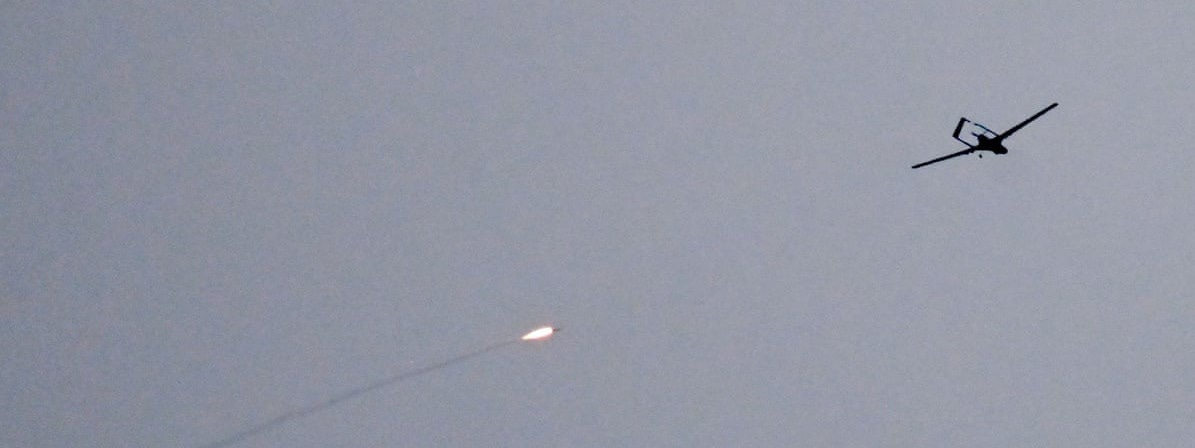



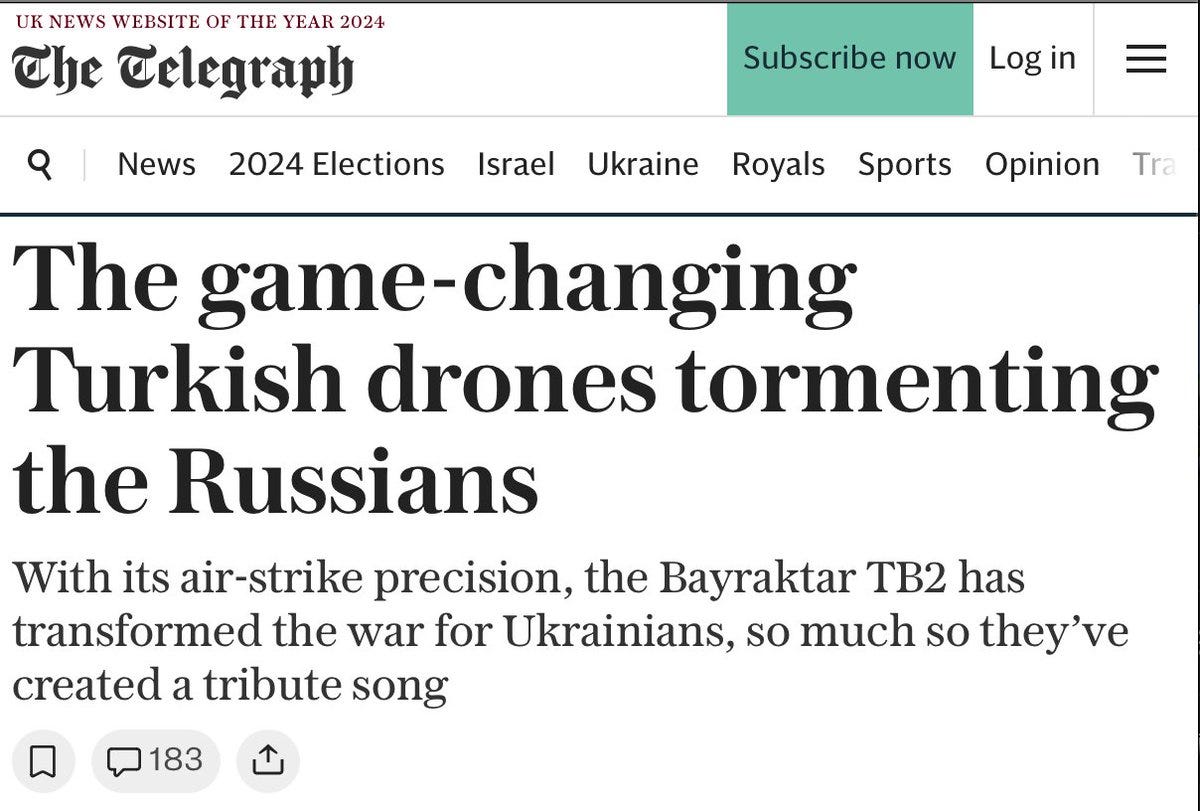


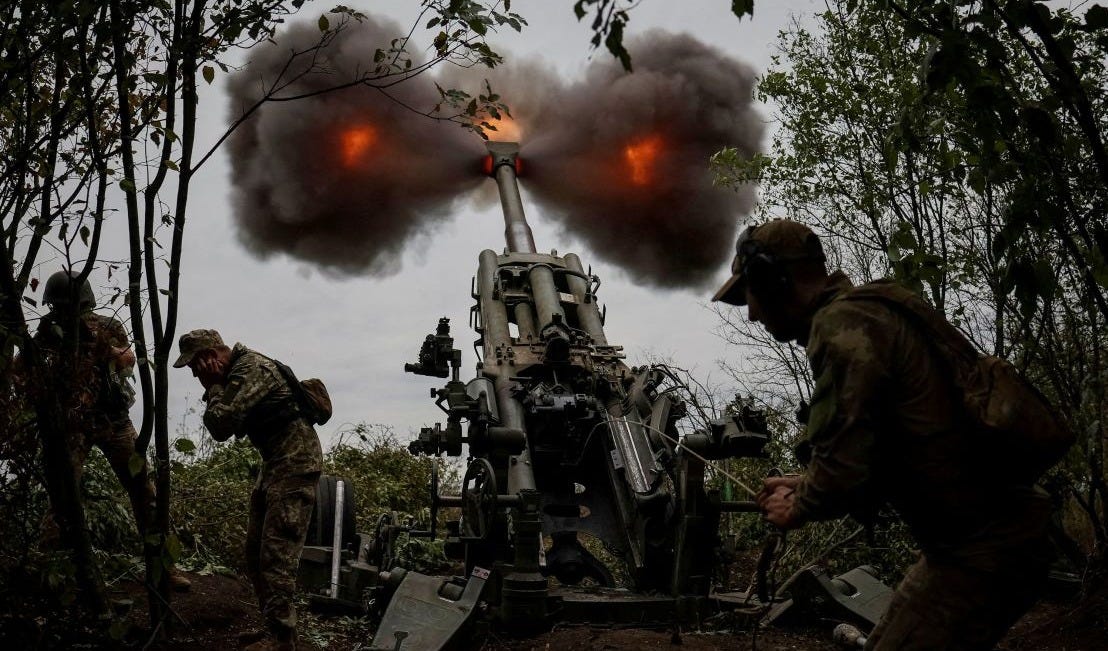



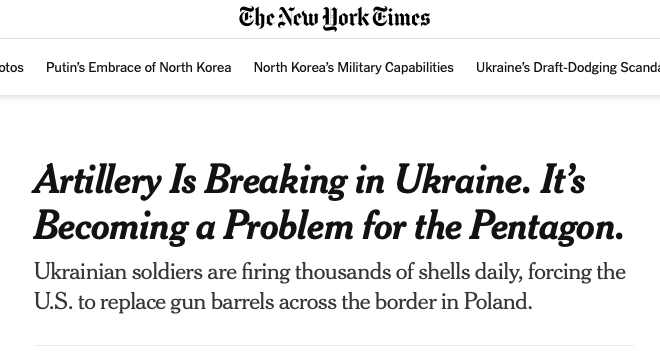



I'd personally put the M777 systems (along with all the other fancy western artillery systems) as atleast a 2 - maybe even a 3....
They have forced something of a doctrine change - in that the the Russians have had to reposition where command posts/resupply/reserves/etc. are - and put a lot more effort to avoid clustering large groupings in the rear.
hadn't got to the writeup on the himars yet - where you gave it a 5! (agreed)
I just tend to group all the western artillery/rocket systems together at this point...